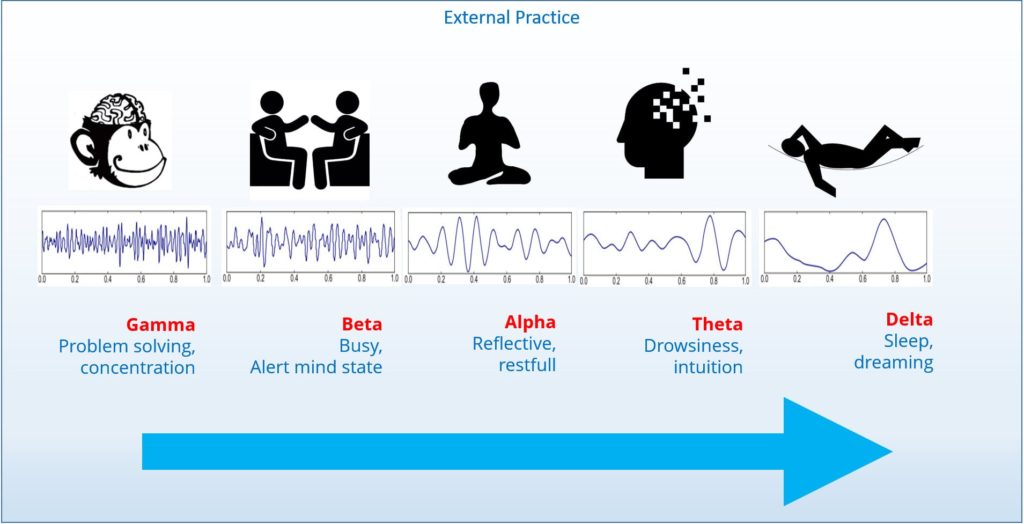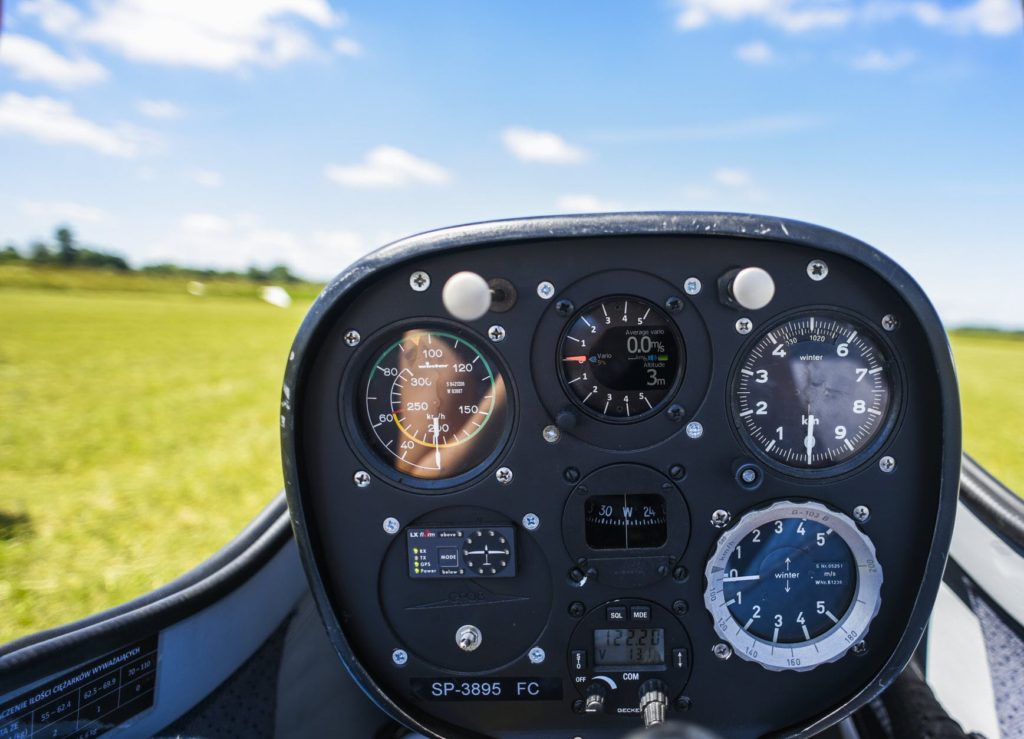Why Mindfulness is not enough
Mindfulness has grown in popularity recently and not just only in private life. Many large multinationals are organizing plenty of Mindfulness workshops to improve the health of the employees.
My argument is that Mindfulness is a good start but is only the tip of the iceberg.
Although no unequivocal scientific evidence has yet been provided, the literature does suggest that Mindfulness can improve health in several areas; it
· would be good for the heart,
· may decrease cognitive decline from ageing or Alzheimer’s,
· may enhance your immune response,
· may reduce cell ageing,
· may help reduce psychological pain.
What Mindfulness has in common with other meditations is that it slows down the mind. I call it the transition from ‘Monkey Brain to Sleep’.
There are five categories of brain waves, each corresponding to different activities we do. Meditation enables us to move from higher frequency brain waves to lower frequencies and calm the mind. Let’s break down the five categories of brain waves:
- Gamma State – The brain waves are at frequencies ranging from approximately 30 to 100Hz. This is the state of hyperactivity in the brain and active learning. Gamma state is the most suitable time to retain information.
- Beta State – This is where we function for most of the day. Beta is associated with the alert mind state of the prefrontal cortex. Brain wave frequencies in this state range from 13 to 30Hz, and this is a state of the “working” or thinking mind: analytical, planning, assessing and categorizing.
- Alpha State – Brain waves in the Alpha state range from 9 to 13Hz. This is the state where brain waves start to slow down out of the thinking mind. We become more calm, peaceful and anchored. We often find ourselves in an alpha state after a thorough yoga class, a walk in the woods, a pleasurable sexual encounter or during any activity that helps relax the body and mind. We are lucid, reflective, have a slightly diffused awareness and are at peace. This is often accompanied by an inner and/or outer glow. The hemispheres of the brain are more balanced.
- Theta State – When brain waves range from 4 to 8Hz in the Theta state, we are able to begin meditation. This is the point where the verbal/thinking mind transitions to the meditative/visual mind. We start to move from the planning mind to a deeper state of awareness (often felt as drowsy), with stronger intuition, more capacity for wholeness and complicated problem-solving.
- Delta State – The final state is the Delta state, where brain waves range from 1 to 3 Hz. Tibetan monks that have been meditating for decades can reach this in an alert, wakened phase but most of us reach this final state during deep, dreamless sleep.

Shifting from external to internal practice.
All of the preceding relates to our external senses, as there are: hearing, smelling, feeling, seeing, tasting, and many others. Within Tai Chi, we go one step further. Even though we focus on the external movements initially, we prepare our students for the inner world. We can detect these via our internal sensors: pressure, pain, heat, muscle condition (five states) and the position of the joints. This internal development will bring the most significant and most lasting improvement to your health and make you internally robust, stable and balanced.
I often compare it to flying based on your instrument panel instead of just looking out the window.

The three stages of inner training.
On a physical level, you can distinguish three levels of inner training. This is based within the Deep Mind Energy Sphere, whereas the external level is based on the physical (brain-consciousness, hormonal balance and body structured movement). The three internal levels – internal body level, energy level and mind level – can be named: Earth, Man and Heaven; Etheric, Astral and Celestial; or Jing, Qi and Shen. The internal levels are trained within the Tai Chi Form. No separate exercises, such as standing meditation or sitting meditation, are required – though pure mind-energy exercises may complement the inner methods of the Taiji movements at a later stage.
- Internal Body level – Jing
The first level has to do with observing and experiencing the alternation between contraction and relaxation, of positioning your posture, by feeling through the joints, and the changes of the joints. Instead of feeling how you move through space (an external feeling), you learn to move by paying conscious attention to the changes in the muscles and joints and you learn to move very accurately from the inside. You are very clearly in touch with the flow of inner changes in your body as you move.
People first have to listen very closely to their body. It’s not the normal listening which is from the superficial mind. Look for genuine body sensations such as warmth, pressure and non-visual body positioning. This is the first step, and it is considerably different from the feeling type of awareness that the average person trains.
Merely increasing concentration on the level of normal daily awareness is a false method that just makes it more difficult to go deeper later on.
Unfortunately, many modern systems of meditation teach people to value and strengthen just this superficial awareness. The ego observes the superficial perceptions, vision, hearing etc. and feels it sees reality ‘just as it is’. It is not a true path.
Patrick Kelly (the teacher of my teacher) spoke of this error, and his experience confirms it.

- 2. Energy level – Qi
The second level has to do with pressure changes and forces acting in your body as you move. It takes a very deep and intense concentration to work with these very subtle changes as you move.
- 3. Mind level – Shen
The third level has to do with the changes in your energy field. You learn to listen to the changes in your energy field that are caused by the movements. You practice tai chi in a very deep meditative way. It is important to note that you can only feel the inner sensations described above when waves pass through your body when you move in a smooth wave motion. If your body moves too chaotic or uncoordinated, these sensations are disrupted.

Influence of inner practice.
Initially, you learn tai chi from your ordinary day-to-day consciousness, your brain consciousness, your superficial consciousness. The purpose of the inner training is to make this part of your consciousness inactive as much as possible and to activate a deeper part of the mind. The superficial consciousness may still pick up some of the sensations and experiences of the first level, but it cannot experience anything from the second or third level. Following the inner training and working with these principles will – the more you practice – have an evident positive influence on your daily life and your immediate environment while at the same time developing more inner strength and inner strength. You are more vital in all areas of your life, and you can better deal with the difficult moments in your life. The fact that you follow the training cannot prevent you from experiencing difficulties in your daily life. But how you deal with those difficulties can change a lot. Instead of resisting or being overwhelmed by problems, you are able to deal efficiently with whatever comes your way with a clearer mind and stability.
Making the picture complete
All true Tai Chi has an external level, three internal levels within the Deep Mind and the level Beyond the Mind.
Though outwardly based on physical exercises for health and self-defence, the aim is to lead the students through the body to the realm of Deep Mind.
Then gradually, step by step, working their way through the three levels Jing, Qi and Shen before reaching the Beyond and the final realization of freedom from the three worlds of human existence.
The intensity of effort and purity of motive are the two essential factors that will irresistibly lead to deep development. The intensity of effort causes changes on a deep level. Only purity of motive will ensure that the inner-growth strengthens the hold of the True Self.
Why is it necessary to develop the deep mind?
The superficial mind, or normal daily awareness is basically brain consciousness. The real mind, in all its parts, exists in the energy field, not in the brain. When you die the superficial mind is gone with the brain, but the deeper aspects of the mind still exist and operate on three different levels. There is the mind connected with the body, the mind connected with the energy field and then there is the intelligence of the mind. The Deep Mind Intelligence functions through these three aspects. It connects into the brain and body through these three aspects, but is quite different from the brain. The Deep Mind, which includes the deeper parts of the energy field, is your real individual self. It’s born in a body to develop its energy field and its associated intelligence’s. That is the purpose of life.

Freely translated from Patrick Kelly’s website: https://patrickkellytaiji.com/

Dag Dirk,
mooi en interessant artikel. Innerlijk rust door te leren voelen hoe het in ons lichaam is.
Ik volg momenteel les, terug het eerste deel Tai Chi , bij Patrick van de witte wolken , ook een leerling bij P. Kelly. Veel groeten uit Laarne, Carlo